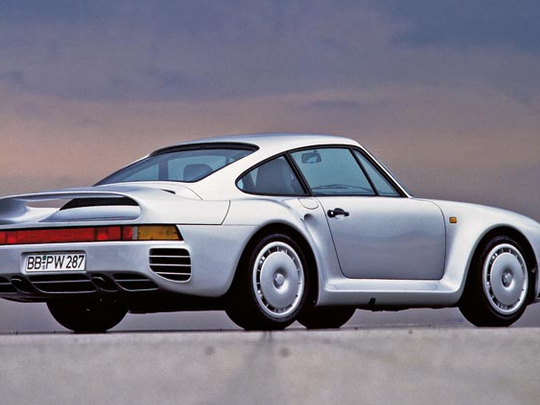
It’s almost inconceivable for Porsche to devote its utter attention to a project and fail. The world cried sacrilege when the Cayenne was introduced, but it’s now the company’s cash cow by a wide margin — Porsche North America sold 8,528 911s in 2012 compared to 15,545 Cayennes, shifting nearly twice as many SUVs as sportscars. In other words, when Zuffenhausen sets its mind to something, the result is strong enough to shift age-old conventions.
In the Eighties, Porsche wanted to win on the race track and on the rally stage, dominating even more than it already was — the company’s V6 turbocharged engines were winning drivers’ and constructors’ titles in Formula 1; the Daytona 24 Hours, 24 Hours of Le Mans and 12 Hours of Sebring were just owned by Porsche, and the Group C global sportscar racing series were the playgrounds of dominant 956 and 962 prototypes.
But then someone in a Porsche lab coat presumably noticed that for all its legendary road cars and racecars, Porsche has never engaged the number 959 and stuck it to the engine shroud of anything. That just wouldn’t do. So they built a 959.
The venerable 959 was initially conceived to fill up Porsche’s already-cluttered trophy cabinet with more silverware from rallying and circuit racing. In order to compete with monstrously powered and turbocharged all-wheel-drive machines terrifying forest critters through the rally stages of the time, Porsche, somewhat predictably, decided to go with a monstrously powered and turbocharged all-wheel-drive machine.
The 959 was therefore a homologation special, but by the time regulations were met with the 200 road cars produced, as per FIA rules, the racing world had moved on. Group B rallying had become the domain of grocery-getting hatchbacks, and at Le Mans, although the car won its class, with all-wheel drive it wasn’t classified as a top-tier entrant so nobody really cared. The 959 did, however, win the gruelling Paris-Dakar rally, which was a small upside for a car that missed its racing opportunity.
Still, homologation rules are awesome, as they mean the average punter gets a go in a road-going example of a fire-breathing racecar. If that average punter has $225,000 (Dh825,750) to spend, which was the price of a 959 in 1986 — in today’s money that’s almost half a million dollars.
For all that dough you got a state-of-the-art supercar, however, competing with the very best from Maranello and Sant’Agata for the 200mph (322kph) throne. As it turned out the Porsche lost that battle too, but the car’s high-tech construction still made it one of a kind.
Porsche went with a conventional steel monocoque and hit its weight target of 1,350kg (the Ferrari F40 was 200kg lighter, but remember the 959’s all-wheel drive weighs a lot) by employing exotic materials like aluminium, reinforced plastics and Kevlar in its body panels.
The 2.8-litre was lifted straight out of a racecar (at least its blueprints were), and due to the huge power, it required a combination of air and water cooling. A pair of turbochargers made the 959 more driveable even with 450bhp out of such a relatively small flat-six. In fact it was so usable some critics call it too tame, even today.
But that only makes it one of the first devastatingly fast, practical supercars. If
you can call Dh20K maintenance costs over 12 months practical (although Dh50K a year or more is not uncommon.)
The car is full of unique parts and state-of-the-art adjustable suspension and electronic control, which, combined with its race-derived mechanicals, makes it a difficult vehicle to service, with very few expert hands available. And since exclusivity is guaranteed with just over 300 examples produced, you can figure on a cost of $300,000) to get you started, running up to double that and more depending on previous ownership and history — but good luck coaxing Jerry Seinfeld or Bill Gates to sell you theirs.











